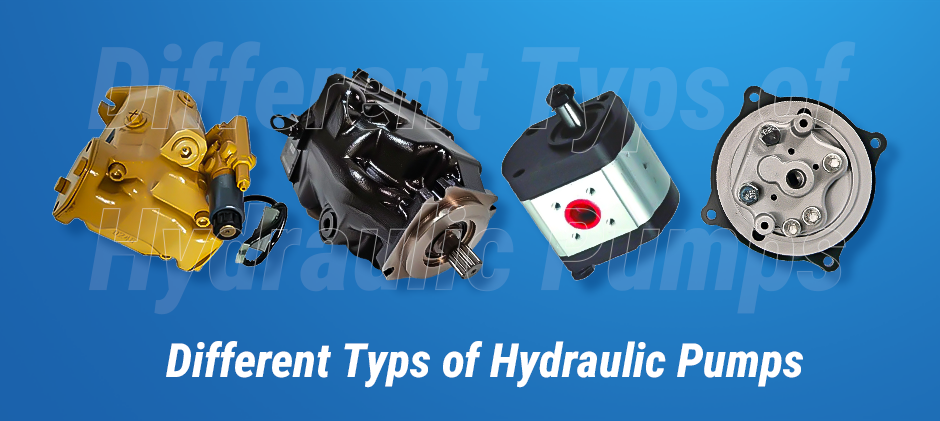Winter and spring can take a toll on your machinery. The combination of colder temperatures, heavy workloads, and fluctuating conditions often leads to increased wear and tear on hydraulic components. This is especially true for hydraulic pumps, which are critical for powering your equipment’s hydraulic systems. That’s why understanding how to properly install and calibrate hydraulic pumps in heavy machinery is crucial for keeping your equipment in top shape. Let’s dive into the essential steps and tips to get you started.

Signs of Hydraulic Pump Wear to Watch For in Your Excavator
If you feel like installing or calibrating your hydraulic pump, the first thing you have to know is to recognize the warning signs of hydraulic pump wear. Spotting these issues early can prevent costly downtime and extend the lifespan of your equipment. Keep an eye out for:
- Unusual Noises: Whining, knocking, or grinding sounds often indicate internal damage.
- Reduced Performance: Slower operations or decreased power output suggest declining efficiency.
- Fluid Leaks: Visible hydraulic fluid leaks around the pump can signal worn seals or connections.
- Overheating: If your pump is consistently running hot, it might be overworking or malfunctioning.
- Erratic Movements: Jerky or inconsistent movements in the excavator’s hydraulic system point to potential pump issues.
Essential Tools for Hydraulic Pump Maintenance and Calibration
Before you get your hands dirty, here is a list of tools that can help you prepare better. Make sure you prepare these tools in advance and at your disposal so that you can avoid interruptions. For installing and calibrating a hydraulic pump, you’ll need:
- Torque Wrenches: Ensures bolts and fittings are tightened to the correct specifications.
- Pressure Gauges: Monitors hydraulic pressure levels during calibration.
- Hose Fittings and Wrenches: Helps securely attach hydraulic lines to the pump.
- Hydraulic Fluid and Filters: Always use manufacturer-recommended fluid and replace filters as needed.
- Calibration Kit: Includes devices for measuring flow rates and ensuring proper pump settings.
- Protective Gear: Gloves and safety goggles to protect against hydraulic fluid exposure.
Preparing these tools in advance will streamline the installation process and help you avoid interruptions.
Step-by-Step Guide to Properly Installing a Hydraulic Pump
Installing a hydraulic pump requires precision and attention to detail. Follow these steps to ensure a seamless installation:
- Buy the Right Hydraulic Pump: I know it may sound like a cliché, but read the manual thoroughly to understand specific requirements for your hydraulic pump and machinery model. You don’t want to spend a great deal of money and time on an incompatible pump. Don’t know where to get reliable hydraulic pumps that apply to your machinery model? Check FridayParts.com as we cover a wide range of hydraulic pumps for different equipment types and various brands.
- Prepare the System: For safety reasons, drain existing hydraulic fluid and clean the reservoir to prevent contamination.
- Inspect Components: Check hoses, seals, and fittings for wear or damage, as you are going to get an important part replaced, you can use the opportunity to replace any compromised parts.
- Mount the Pump: Align the hydraulic pump with its mounting points and secure it using appropriate bolts and a torque wrench.
- Connect Hoses: Attach hydraulic lines, ensuring a tight and leak-free connection.
- Refill Hydraulic Fluid: Use fresh, high-quality fluid recommended by the manufacturer. Remember there is seasonal fluid for your choice, when it comes to winter, fluid with a lower viscosity is always recommended.
- Prime the Pump: Remove trapped air by slowly operating the system without a load.
- Test the System: Check for leaks, pressure consistency, and smooth operation before returning the equipment to full use.
Key Calibration Techniques for Excavator Hydraulic Pumps
What is hydraulic pump calibration anyway? Hydraulic pump calibration is basically adjusting the pump so it works exactly the way your machinery needs it to. It’s about making sure it delivers the right pressure and fluid flow, keeping everything running smoothly and efficiently. Over time, regular use, heavy workloads, and changing operating conditions can cause the pump to drift from its original settings. Now you know the necessity of the calibration, here’s how to calibrate it effectively:
- Set Baseline Pressure: Use a pressure gauge to adjust the pump to the recommended baseline pressure level.
- Measure Flow Rates: Connect a flow meter to check if the pump delivers the correct hydraulic fluid flow.
- Adjust Relief Valves: Fine-tune relief valves to prevent excessive pressure that could damage the system.
- Monitor Load Performance: Test the pump under typical load conditions to ensure consistent operation.
- Document Settings: Record calibrated settings for future reference or adjustments.
Conclusion
Installing and calibrating hydraulic pumps in heavy machinery doesn’t have to be daunting. By recognizing signs of wear, using the right tools, following proper installation steps, and calibrating accurately, you can keep your equipment running smoothly through the challenges of winter and spring. Regular maintenance and attention to detail will not only extend the life of your hydraulic pump but also save you time and money in the long run. Take the time to care for your machinery’s hydraulic components today and visit FridayParts for a cost-effective hydraulic pump price list.
